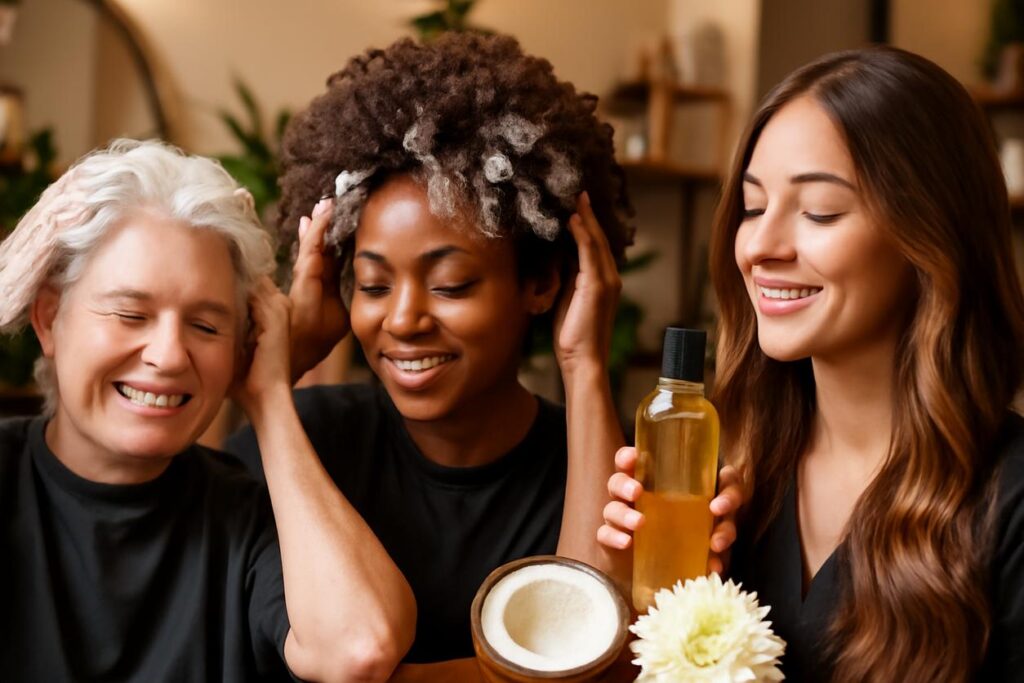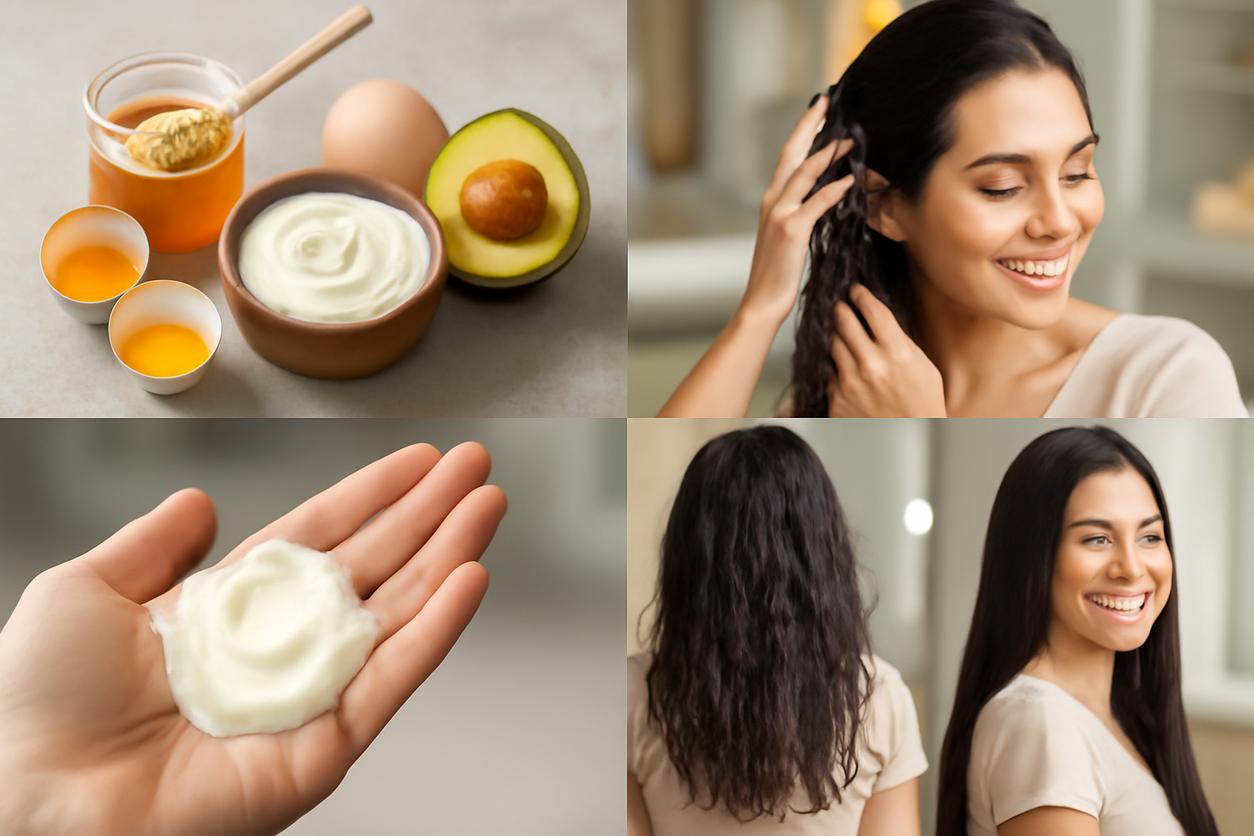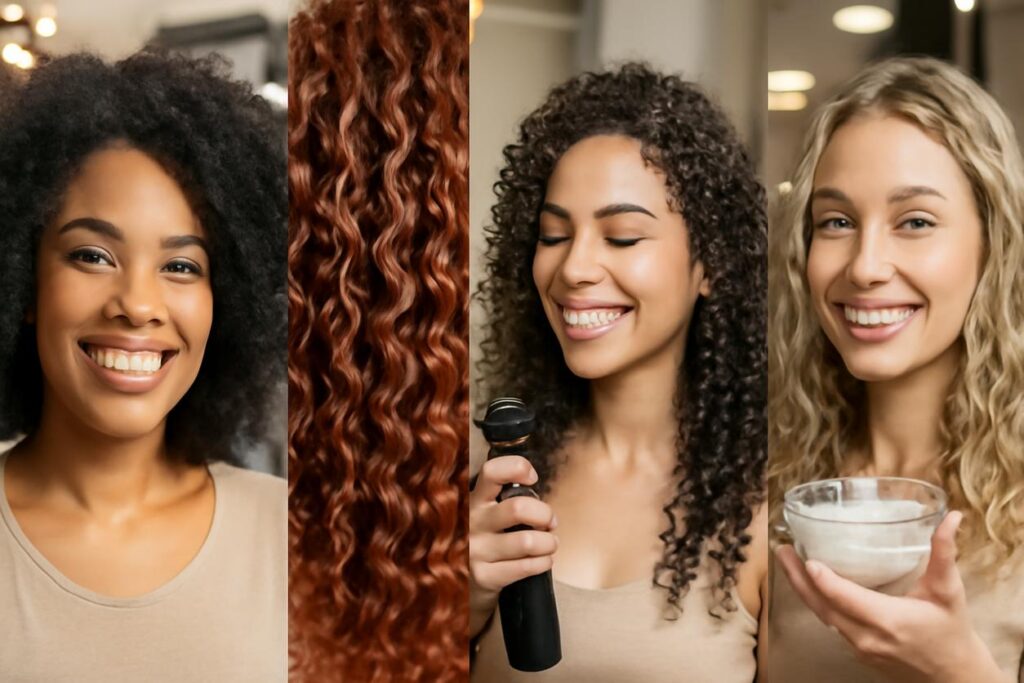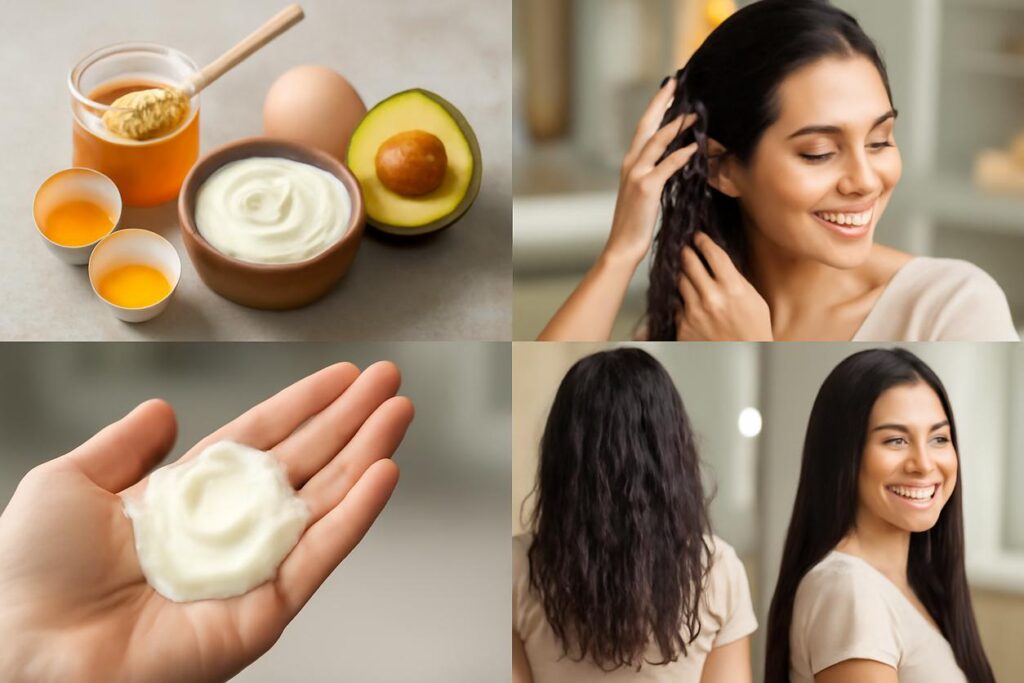Table of Contents
- Introduction: Why Your Shampoo Choice Shapes Your Hair’s Health
- Decode Your Hair and Scalp: A Quick Self-Assessment
- How Shampoo Ingredients Work: The Essentials
- Ingredients to Welcome and Ones to Skip
- Finding the Best Shampoo for Hair by Profile and Goal
- How to Switch Shampoos Without the Shock
- Washing Routines Explained: From Daily to Occasional
- Boosting Results with Conditioners and Treatments
- Simple DIY Swaps and Home Remedies
- Shopping Guide: What Labels and Claims Really Mean
- Quick Troubleshooting: Common Shampoo Issues
- Expert-Backed Tips for Long-Term Hair Health
- Conclusion: Making a Sustainable Shampoo Plan
- Frequently Asked Questions (FAQ)
Introduction: Why Your Shampoo Choice Shapes Your Hair’s Health
Walking down the hair care aisle can feel overwhelming. With countless bottles promising shine, volume, and repair, how do you find the best shampoo for hair that actually delivers? The secret isn’t in the marketing claims but in understanding what your hair truly needs. Your shampoo is the foundation of your entire hair care routine. The right one cleanses effectively without stripping essential moisture, balances your scalp’s ecosystem, and prepares your hair to look and feel its best. Choosing the wrong one can lead to a cascade of issues, from dryness and breakage to oiliness and irritation.
This guide will move beyond the hype and empower you to become a savvy shopper. We will take an ingredient-first approach, helping you understand the science behind the suds. By learning to decode your hair’s unique profile and read an ingredient list, you can confidently select the best shampoo for hair health, not just for a single good hair day, but for a lifetime of them.
Decode Your Hair and Scalp: A Quick Self-Assessment
Before you can find the perfect match, you need to know who you’re shopping for. Your hair and scalp have distinct personalities. Answer these simple questions to identify your unique profile.
What is Your Hair Type?
- Oily: Does your hair look greasy or flat less than 24 hours after washing?
- Dry: Does your hair feel rough, frizzy, or brittle? Is it prone to split ends?
- Normal: Does your hair stay fresh for a couple of days, feel balanced, and have minimal frizz or oiliness?
- Combination: Are your roots oily but your ends dry and brittle?
How is Your Scalp’s Health?
- Sensitive: Does your scalp often feel itchy, tight, or red, especially after washing?
- Dandruff-Prone: Do you experience flaking, which can be either oily (yellowish flakes) or dry (white flakes)?
- Balanced: Does your scalp feel comfortable, with no significant itching, flaking, or excess oil?
Knowing your combination of hair type and scalp condition is the critical first step in narrowing down your search for the ideal shampoo.
How Shampoo Ingredients Work: The Essentials
Understanding a shampoo’s formula doesn’t require a chemistry degree. Most shampoos are built around three core types of ingredients that perform specific jobs.
- Surfactants (The Cleansers): These are the workhorses. Surfactants create lather and are responsible for removing dirt, oil, and product buildup from your hair and scalp. They range from very strong (like Sodium Lauryl Sulfate) to very mild (like Cocamidopropyl Betaine).
- Conditioning Agents (The Softeners): After the surfactants do their cleaning job, conditioning agents step in to add softness, reduce friction, and make hair easier to comb. Ingredients like silicones, natural oils, and proteins fall into this category.
- Active Ingredients (The Problem-Solvers): These are targeted ingredients added to address specific concerns. For example, ketoconazole for dandruff, salicylic acid for an oily scalp, or biotin for promoting the appearance of fuller hair.
Ingredients to Welcome and Ones to Skip
Navigating an ingredient list is much easier when you know which players are on your team. Here’s a quick-glance guide.
Ingredients to Look For
- Glycerin and Hyaluronic Acid: These are humectants, meaning they attract moisture from the air into your hair, providing excellent hydration for dry or frizzy types.
- Natural Oils and Butters: Ingredients like Argan Oil, Jojoba Oil, Coconut Oil, and Shea Butter are fantastic for nourishing, softening, and adding shine, especially for dry, coarse, or curly hair.
- Hydrolyzed Proteins: Keratin, wheat, or silk proteins help to patch up weak spots in the hair shaft, temporarily strengthening damaged or color-treated hair.
- Gentle Surfactants: Look for cleansers derived from coconut or sugars, such as Decyl Glucoside, Coco-Glucoside, or Sodium Cocoyl Isethionate, for a cleanse that doesn’t strip natural oils.
Ingredients to Use with Caution
- Sulfates (SLS/SLES): Sodium Lauryl Sulfate and Sodium Laureth Sulfate are highly effective cleansers that create a rich lather. However, they can be too harsh for those with dry, color-treated, or sensitive scalps, leading to irritation and color fading.
- Parabens: Used as preservatives, some individuals prefer to avoid them due to ongoing debate about their potential health effects. Many effective, paraben-free preservation systems are now available.
- Certain Silicones: While silicones can provide amazing slip and shine, heavy, non-water-soluble silicones (like Dimethicone) can build up on the hair over time, weighing it down and requiring a stronger shampoo to remove.
Finding the Best Shampoo for Hair by Profile and Goal
Now, let’s connect your hair profile with the right ingredients. Instead of recommending brands, this table shows you what type of formula will be the best shampoo for hair like yours.
| Hair Profile or Goal | Key Ingredients to Look For | Why They Work |
|---|---|---|
| Fine or Thinning Hair | Biotin, Niacinamide, Caffeine, Saw Palmetto, Gentle Cleansers | These ingredients support a healthy scalp environment and provide a lightweight cleanse to maximize volume and fullness. |
| Oily Hair and Scalp | Salicylic Acid, Tea Tree Oil, Witch Hazel, Clay (Bentonite/Kaolin) | They help regulate sebum production, deeply cleanse pores on the scalp, and provide a refreshing, non-stripping clean. |
| Dry or Damaged Hair | Glycerin, Hyaluronic Acid, Shea Butter, Argan Oil, Hydrolyzed Keratin | Focuses on replenishing moisture, sealing the hair cuticle, and repairing the protein structure for smoother, stronger strands. |
| Color-Treated Hair | Sulfate-Free Surfactants, Antioxidants (Vitamin E, Green Tea Extract), UV Filters | Gentle cleansing prevents premature fading, while antioxidants and filters protect the color from environmental damage. |
| Curly or Coily Hair | Coconut Oil, Shea Butter, Glycerin, Aloe Vera, Avocado Oil | Provides intense moisture (a must for curls!), enhances curl definition, and fights frizz without weighing down the pattern. |
| Sensitive or Itchy Scalp | Colloidal Oatmeal, Aloe Vera, Chamomile, Fragrance-Free Formulas | These ingredients are known for their soothing and anti-inflammatory properties, calming irritation and providing gentle care. |
How to Switch Shampoos Without the Shock
Sometimes, when you switch to a new, gentler shampoo (especially a sulfate-free one), your hair might go through a transition period. It could feel slightly greasier or heavier at first. This is often because your scalp is used to overproducing oil to compensate for being stripped by harsh detergents. Give it 2-4 weeks to adjust. A clarifying wash once before you start your new routine can help remove old product buildup and give you a fresh start.
Washing Routines Explained: From Daily to Occasional
How often you should wash your hair is highly personal. Over-washing can strip your hair, while under-washing can lead to buildup and scalp issues. Here’s a general guideline for your 2025 hair care strategy:
- Oily Hair: Daily or every other day washing is often necessary to keep oil under control.
- Normal Hair: Every 2-3 days usually strikes the perfect balance.
- Dry or Curly Hair: Aim for 1-3 times per week to preserve natural oils and prevent dryness.
- After a Workout: If you sweat heavily, it’s best to at least rinse your hair, or use a gentle co-wash (conditioner-only wash) to remove sweat without stripping oils.
Boosting Results with Conditioners and Treatments
Shampoo opens the hair’s cuticle to clean it; conditioner’s job is to seal it back down. Always follow up your wash with a conditioner suited to your hair type, focusing on the mid-lengths and ends. For an extra boost of moisture or repair, incorporate a deep conditioner or hair mask into your routine once a week.
Simple DIY Swaps and Home Remedies
While a well-formulated shampoo is hard to beat, some simple home remedies can supplement your routine. Always patch-test before applying anything new to your hair and scalp.
- Apple Cider Vinegar (ACV) Rinse: Mix one part ACV with four parts water. After shampooing and conditioning, pour the mixture over your hair. Let it sit for a minute, then rinse. This can help clarify, smooth the cuticle, and add shine. Use it no more than once a week.
- Avocado and Olive Oil Mask: Mash half an avocado with a tablespoon of olive oil. Apply to damp hair, leave on for 20 minutes, then rinse thoroughly and shampoo as usual. This is a great deep-conditioning treat for very dry hair.
Shopping Guide: What Labels and Claims Really Mean
Marketing terms can be confusing. Here’s a quick decoder:
- “Sulfate-Free”: This means the product doesn’t contain SLS or SLES. It’s a great option for sensitive or color-treated hair but doesn’t automatically mean “gentle,” as other detergents can still be used.
- “Natural” or “Organic”: These terms are not strictly regulated in hair care. Look for specific certifications if this is important to you, and always check the full ingredient list.
- “Clarifying”: This indicates a strong cleansing formula designed to remove heavy product buildup. It’s great for occasional use (once or twice a month) but too harsh for daily washing.
- “Hydrating” or “Moisturizing”: These formulas contain humectants and oils designed to attract and lock in moisture, making them the best shampoo for hair that is dry or frizzy.
Quick Troubleshooting: Common Shampoo Issues
Even with the right product, issues can arise. Here’s how to fix them.
- Hair Feels Weighed Down or Gummy: You may be experiencing product buildup. Use a clarifying shampoo to reset your hair.
- Scalp is Itchy or Flaky: Your shampoo might be too harsh, or you’re not rinsing thoroughly enough. Try a gentler, sulfate-free, or fragrance-free option.
- Hair Feels Dry and Straw-Like: The formula is likely too stripping for your hair type. Switch to a more moisturizing shampoo with ingredients like glycerin or shea butter.
Expert-Backed Tips for Long-Term Hair Health
Finding the right shampoo is a huge step, but a holistic approach yields the best results. For credible information on scalp conditions, the British Association of Dermatologists is an excellent resource. Additionally, you can explore scientific studies on hair care ingredients on platforms like PubMed to understand their efficacy.
Experts at resources like Rich Hair UK often emphasize these foundational tips:
- Wash with Lukewarm Water: Hot water can strip your hair and scalp of natural oils.
- Focus on the Scalp: When shampooing, gently massage the product into your scalp with your fingertips. The suds will run down and clean the lengths of your hair as you rinse.
- Be Gentle: Avoid rough towel drying. Instead, gently squeeze excess water out with a soft t-shirt or microfiber towel to reduce friction and frizz.
Conclusion: Making a Sustainable Shampoo Plan
The journey to finding the best shampoo for hair is a personal one. It’s about shifting your focus from brand names to beneficial ingredients and from marketing promises to your hair’s actual needs. By assessing your hair profile, understanding key ingredients, and listening to how your hair responds, you can build a smart, sustainable routine. The perfect shampoo isn’t just about cleansing; it’s the first and most important step toward achieving consistently healthy, vibrant hair that you love.
Frequently Asked Questions (FAQ)
How often should I change my shampoo?
You don’t need to switch shampoos if your current one is working well. However, if your hair’s needs change—due to seasonal weather, chemical processing, or age—it’s a good time to reassess your choice and find a formula that better suits your new condition.
Is a more expensive shampoo always better?
Not necessarily. Price often reflects branding, packaging, and the concentration of specialty ingredients. You can find an excellent, effective best shampoo for hair at any price point by focusing on the ingredient list rather than the price tag.
Why doesn’t my sulfate-free shampoo lather as much?
Rich lather is created by strong surfactants like sulfates. Milder, sulfate-free cleansers produce a lower, creamier lather. Don’t worry—less foam doesn’t mean less clean! The shampoo is still effectively removing dirt and oil without stripping your hair.






